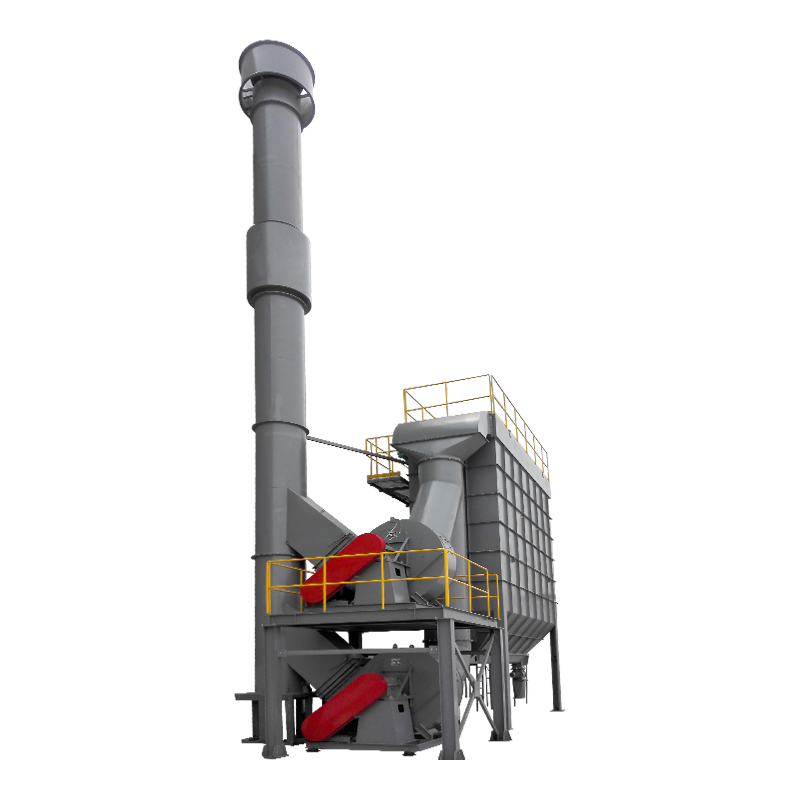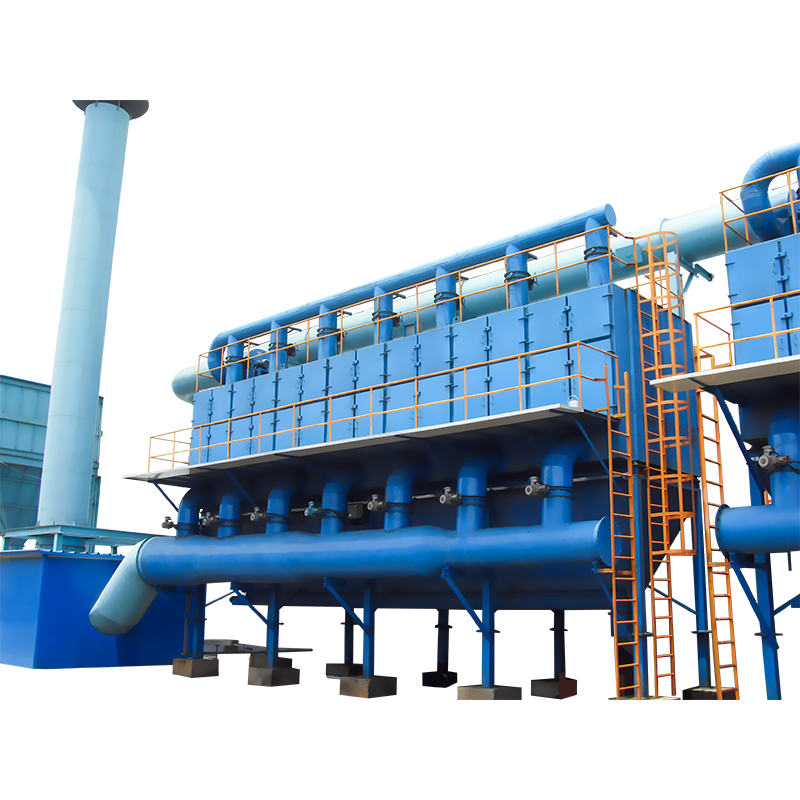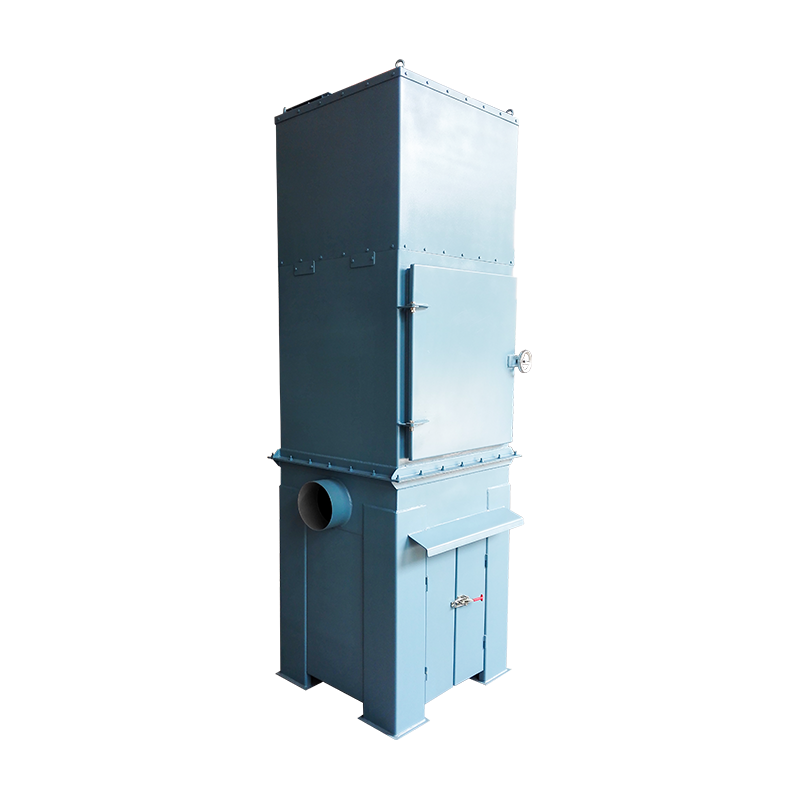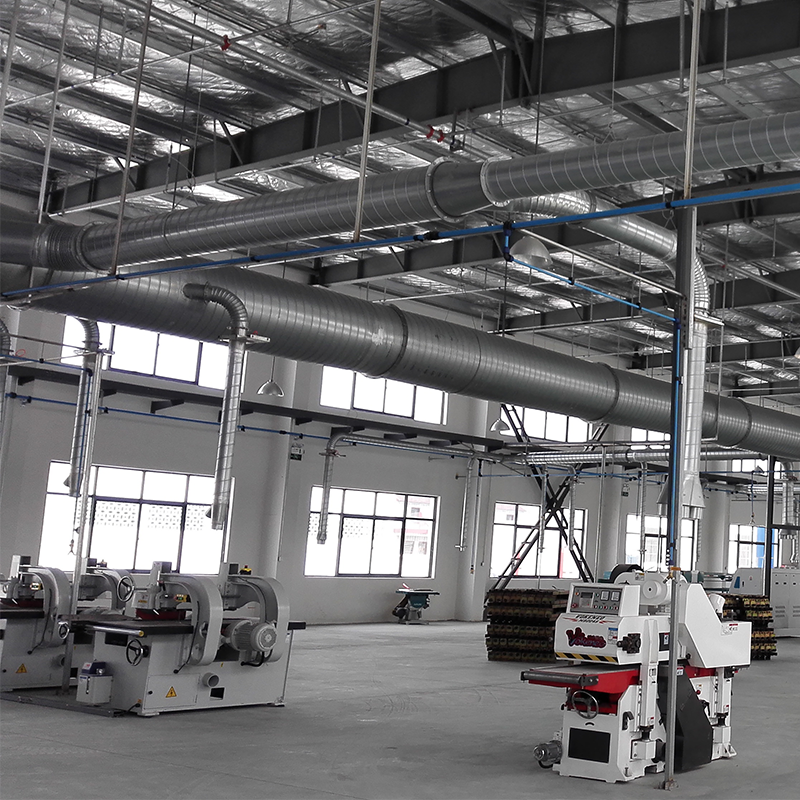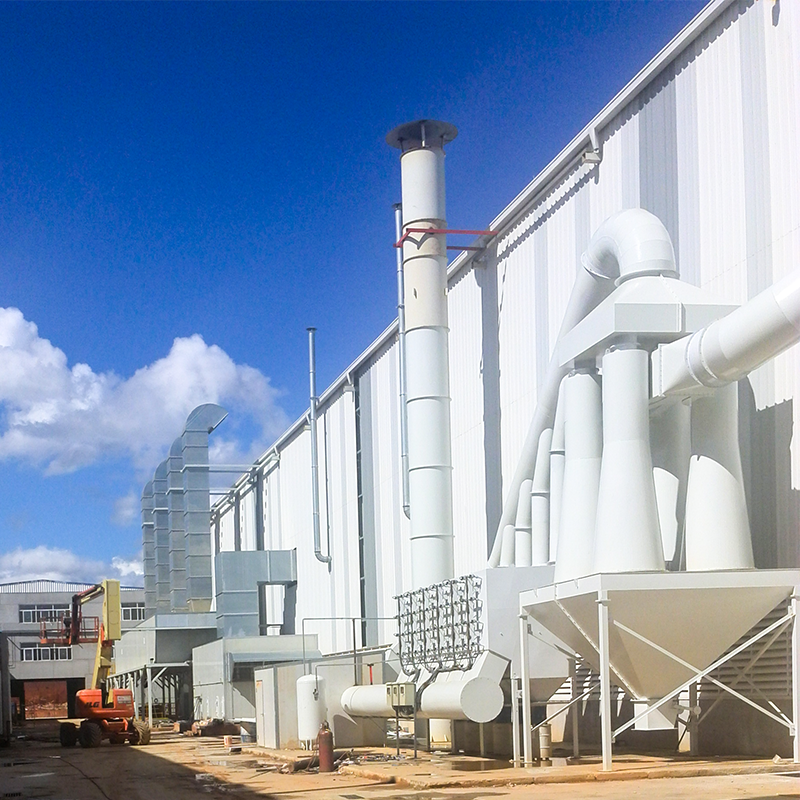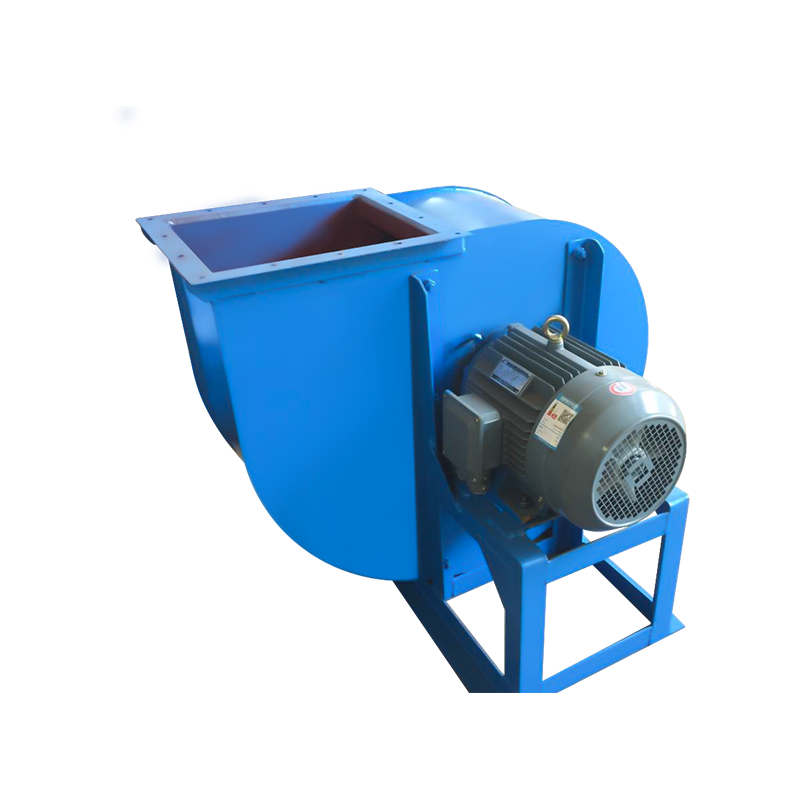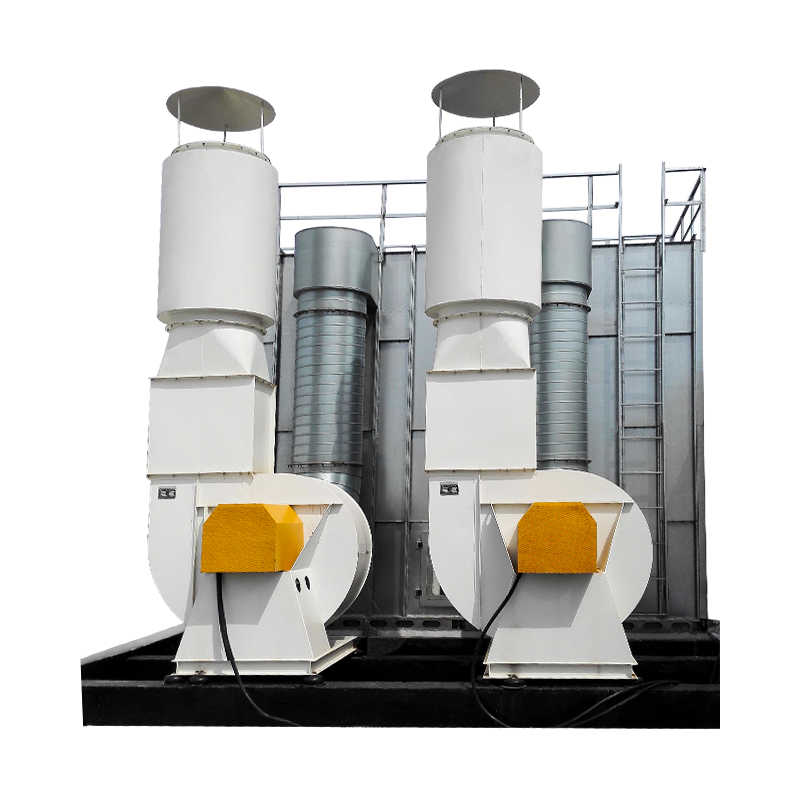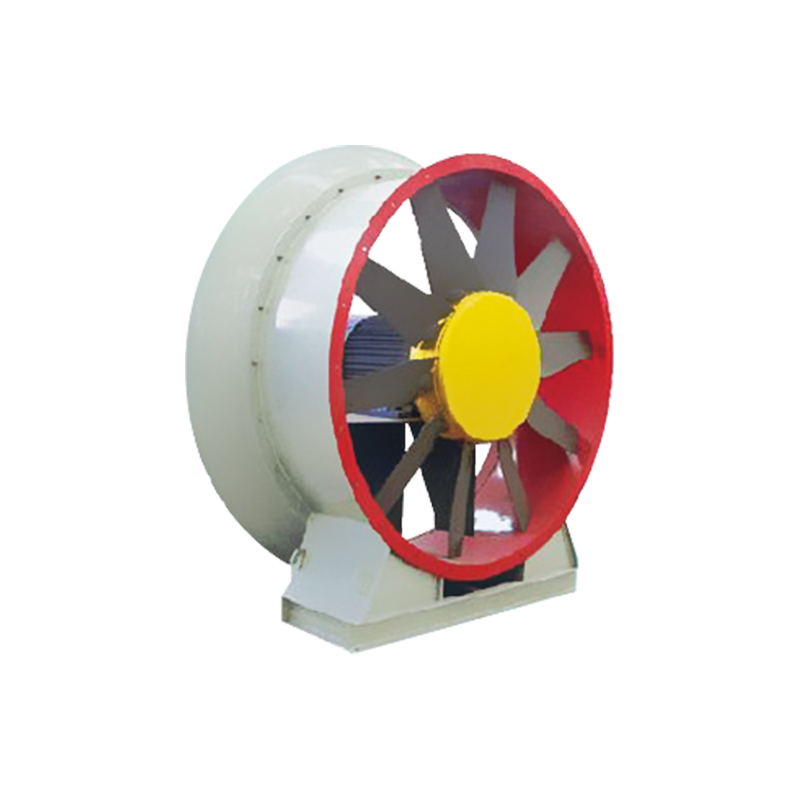What is the core working principle of the Pulse Dust Collector?
The core working principle of the Pulse Dust Collector is mainly based on the pulse jet technology to achieve the removal of dust accumulated on the filter bag, thereby maintaining an efficient dust removal effect. The following is a detailed description of the working principle:
1. Filtration process
When the dust-laden gas enters the pulse dust collector, it first enters the filter chamber of the dust collector through the air intake duct.
In the filter chamber, the dust-laden gas passes through the filter bag, and the dust is retained on the outer surface of the filter bag, while the clean gas passes through the filter bag into the upper box and is finally discharged through the exhaust duct.
Over time, the dust on the outer surface of the filter bag gradually accumulates to form a dust layer.
2. Pulse jet cleaning process
When the dust on the filter bag accumulates to a certain extent, causing the dust collector resistance to increase, a cleaning operation is required.
The pulse dust collector uses pulse jet technology to spray high-pressure compressed air into the filter bag by controlling the opening and closing of the pulse valve.
High-pressure air rushes into the filter bag through the induction nozzle in a very short time, causing the filter bag to expand rapidly and vibrate.
This vibration and the effect of reverse airflow scouring cause the dust attached to the outer surface of the filter bag to be peeled off and fall into the ash hopper.
The dust in the ash hopper is then discharged from the dust collector through the ash discharge device.
3. Advantages of pulse injection technology
Pulse injection technology has the characteristics of strong dust removal ability and high dust removal efficiency.
It can quickly remove the dust accumulated on the filter bag and restore the filtering performance of the filter bag.
At the same time, pulse injection technology also has the advantages of simple operation and low maintenance cost.
4. Automatic control
Modern pulse dust collectors are usually equipped with automatic control systems such as PLC (programmable logic controller).
These systems can monitor the operating status and resistance changes of the dust collector in real time, and automatically adjust the frequency and intensity of pulse injection according to the set parameters.
Thereby ensuring that the dust collector is always in the best working state and improving the dust removal efficiency and stability.
What key factors should be considered when designing and installing a pulse dust collector?
When designing and installing a pulse dust collector, multiple key factors need to be considered comprehensively to ensure the performance, efficiency and long-term stable operation of the dust collector. The following are some of the main key factors:
1. Dust removal efficiency requirements
Clear dust removal efficiency: First, the dust removal efficiency requirements need to be clarified. This is usually determined based on factors such as the nature of the dust, emission standards, and process requirements. Dust removal efficiency is an important indicator for evaluating the performance of the dust collector and directly affects the dust removal effect.
2. Dust collector selection
Choose the appropriate dust collector model: Choose the appropriate pulse dust collector model based on the amount of dust generated, the nature of the dust, the air flow rate, and the dust removal efficiency requirements. Different models of dust collectors differ in processing capacity, dust removal efficiency, and operating costs.
3. Filter material selection
Filter material: The filter material of the pulse dust collector is one of the key components, and the appropriate filter material needs to be selected according to the nature and working conditions of the dust. For example, for high temperature, high humidity, and highly corrosive dust, it is necessary to select a filter material that is resistant to high temperature, corrosion, and oxidation.
4. Filtration wind speed
Determine the filtration wind speed: Filtration wind speed is one of the important parameters in the design of pulse dust collector, which directly affects the performance and life of the dust collector. The determination of filtration wind speed needs to consider the type of filter material, the nature of dust, emission standards and the overall design of the dust collector.
5. System design and layout
Intake system: Design a reasonable intake system to ensure that dust can enter the dust collector evenly, while considering issues such as pressure loss and noise in the intake system.
Blowing system: Design a reliable blowing system to ensure the cleaning effect and performance of the pulse dust collector. Parameters such as time, strength, frequency and initial pressure difference of the blowing system need to be adjusted and controlled according to the material of the filter bag and the characteristics of the dust.
Exhaust system: Determine the exhaust port position to meet the exhaust gas emission standards and avoid repeated circulation of exhaust gas.
Dust collector installation location: The location of the dust collector in the operating area should take into account factors such as ventilation and exhaust, while meeting the needs of air agitation and heat dissipation.
6. Equipment maintenance and overhaul
Maintainability: The convenience of equipment maintenance and overhaul should be considered during design, such as easy-to-replace filter materials and easy-to-remove injection systems.
Safety: Pulse dust collector is a high-pressure equipment. When designing, attention should be paid to the safety of the equipment, such as the pressure bearing capacity of the equipment, explosion-proof measures, and the configuration of safety valves and other devices.
7. Other factors
Outlet dust concentration: must be lower than the specified value of environmental protection regulations and national health standards. Depending on the structure of the dust collector, the type of filter material, and the nature of the dust, there are usually different requirements for the outlet dust concentration.
Equipment resistance and pressure resistance: Equipment resistance refers to the total pressure difference from the inlet to the outlet of the dust collector in the operating state. The equipment resistance variation margin should be considered during design to determine the selection of the fan. The equipment pressure resistance is determined according to the process requirements and the static pressure of the fan to ensure that the dust collector is not damaged during normal operation.

 English
English Español
Español عربى
عربى
